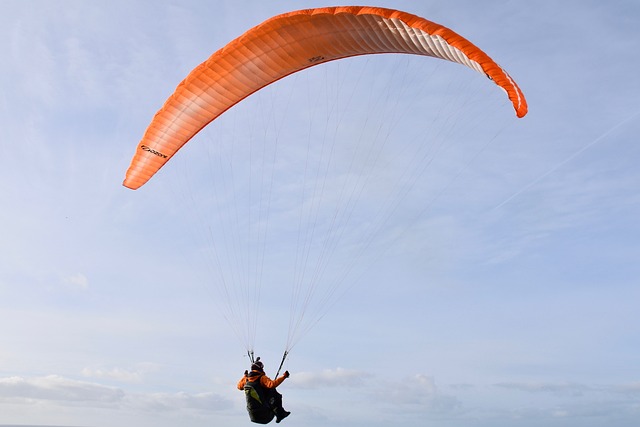Paragliding wings, often referred to as “paragliders,” are not just pieces of fabric stitched together and attached to a harness. They are intricate, highly engineered instruments that allow humans to experience the joy of flight. Understanding the dynamics of paragliding wings can unlock an appreciation for the sport and its equipment that enhances the flying experience.

What Constitutes a Paragliding Wing?
At first glance, paragliding wings may look simple. However, they are made up of several complex parts that work harmoniously to keep the pilot airborne.
The Canopy and Cells
The most visible part of the paragliding wing is the canopy, the large, kite-like fabric structure that catches the air. The canopy is divided into a series of cells by vertical panels known as ribs. The cells inflate with air during flight, transforming the wing into an aerofoil shape that produces lift.
The Lines and Risers
Beneath the canopy, a series of thin, strong lines descend to connect the wing to the pilot’s harness. These lines are grouped into risers – sets that control the wing’s behaviour in flight. The risers offer the pilot the ability to deflate specific parts of the wing, perform turns, and affect the glider’s speed.
The Harness
While technically not a part of the wing, the harness is integral to the overall flight mechanism. The pilot sits in the harness, which is attached to the wing via the risers. The harness also contains the reserve parachute, itself a crucial safety feature.
How Do Paragliding Wings Work?
Understanding the parts of a paragliding wing is essential, but how do these components work together to allow flight?
Generating Lift
Just like an airplane wing, a paragliding wing creates lift—an upward force that opposes gravity. When the wing moves through the air, it creates a pressure difference above and below it. This difference generates lift, and the wing, along with the pilot, rises.
Steering and Control
The pilot controls the direction and speed of the paraglider by manipulating the brake handles attached to the risers. Pulling on one side creates drag on that part of the wing, causing the glider to turn.
Are All Paragliding Wings Created Equal?
Though they may look similar, not all paragliding wings are the same. Various factors differentiate them, including design, size, and material, each catering to different flying conditions and pilot skill levels.
Design and Size
Paragliding wings come in various designs, from beginner-friendly rectangular ones to advanced elliptical wings. The size also varies, depending on the pilot’s weight and flying conditions. A larger wing offers slower, more stable flight, while a smaller wing provides faster, more agile flight.
Material
The material used in the canopy significantly affects the wing’s durability and lifespan. Most wings use a combination of nylon and polyester, chosen for their light weight and resistance to UV damage and abrasion.
Final Thoughts on the Dynamics of Paragliding Wings
Paragliding wings may seem straightforward, but they are actually a marvel of modern engineering and design. Understanding these dynamics brings a new level of appreciation to the sport of paragliding, taking pilots, and those who dream of flight, beyond the thrill and into a world of technical fascination. Indeed, every time a paraglider launches their wing, they are stepping into a world where art, science, and adventure collide.



